I am using the ICL7660 charge pump IC to generate a -5V supply from a +5V. When using the IC on breadboard with a DIP package (ICL7660CPAZ), with two 10µF electrolytic capacitors, it works perfectly fine.
However, when I change the chip in the circuit for the SMD package (ICL7660CBAZ + SOIC to DIP adapter), the output voltage stays 0V or is slightly positive.
I have tried different chips, manufacturers, adapters, capacitors, soldering temperature... SMD components never worked!
Any idea on why the package is changing the behavior of the circuit?

simulate this circuit – Schematic created using CircuitLab